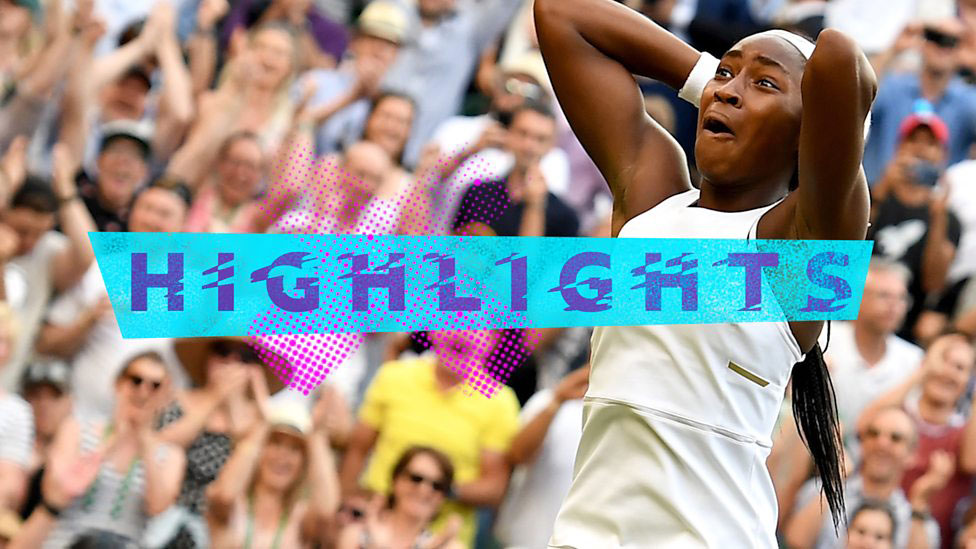15-year-old Coco Gauff’s 3rd round match v Polona Hercog at this year’s Wimbledon was epic – definitely one of the matches of the tournament! Having lost the first set and saved match points, the youngster dug deep and fought back to clinch victory.
In presenting the match highlights, the BBC tried a new approach. The edit, accompanied by upbeat music, featured flashy graphics of words such as ‘unbelievable’ and ‘boss’.

In our opinion, this edit was unnecessary. It distracted from the action and the remarkable story accompanying it. Audiences do not like to be told what to feel. Moreover, it weakened the piece’s authenticity, thus effectively disengaging the audience.
Core content was diluted by over-zealous editing. The highlights of the remarkable tennis – the Gauff story, and the match narrative – were powerful enough on their own to connect with and engage fans.
Perhaps the brief was to attract a new and younger audience? If so, this is best done not on linear TV but on social or iPlayer. On these platforms you can experiment with different formats and exciting new approaches without alienating your more mature viewers.
The marketing world values sport for its raw authenticity. This is usually sufficient in itself to conjure the powerful emotions that creative content seeks to invoke.
As the Wimbledon experiment showed, getting the creative balance right is not easy. If the creative overpowers the action, it distracts, frustrates and disengages fans. But when spot on, it is the difference between good content and great content.
In our opinion, another big name that got the balance wrong was Eurosport.
Presenting highlights of Stage 3 of the 2019 Tour de France, Eurosport edited their content with flashy visuals indicating the distance remaining in the race.
The consensus among viewers was that the edit distracted from the cycling itself. Some viewers deemed the footage ‘unwatchable’, ‘irritating’ and ‘out of control’.
Eurosport failed to let the action tell its own story – and consequently its audience were turned off. Their edit pushed viewers away instead of bringing them closer to the action and atmosphere. As the BBC did at Wimbledon, their creative input detracted from the sporting experience.
Message: wherever possible, let the sport, not the creative, do the talking!
An example of how to do this well? In our opinion it was BT Sport’s No Filter packages for the Champions League. In particular, the presentation of Liverpool’s journey to the Champions League Final in Madrid, shared across their OTT platform and social channels.
These packages – a fantastic mix of action / studio / fan content – succeed in bringing you closer to the heart of the event’s atmosphere.
The footage is authentic and therefore engaging. The creative input is minimal because the content alone communicates the story, evokes emotion – and therefore connects powerfully with the audience.
In other words, and to repeat: the sport does the talking.
To conclude. When working on creative edit, you can try TOO hard. Good content can carry your story without intrusive edits, bold graphics and overbearing sound. In most cases, the best creative in sport has simplicity at its core: embrace the pre-written narrative and let the action speak for itself.
Contact Alex Ross to see how REDTORCH’s team of experts can help you produce creative content that fans fall in love with.
Kirby O’Donnell
Northern Irish, sport-obsessed and probably the most competitive person you’ll ever meet.
My most memorable sporting moment is ...
Any time my local football team Glentoran beat their rivals Linfield.
I'm happiest when...
Watching sport surrounded by friends and family, with a glass of red in hand.
The sports person that best represents me is...
Billie Jean King.
The three things at the top of my bucket list are...
1. Meet Rafa Nadal (love of my life)
2. Watch Ireland win a Rugby World Cup
3. Own as many dogs as possible
A quote I try to live my life by is...
“Change the way you look at things and the things you look at change” - Wayne Dyer




